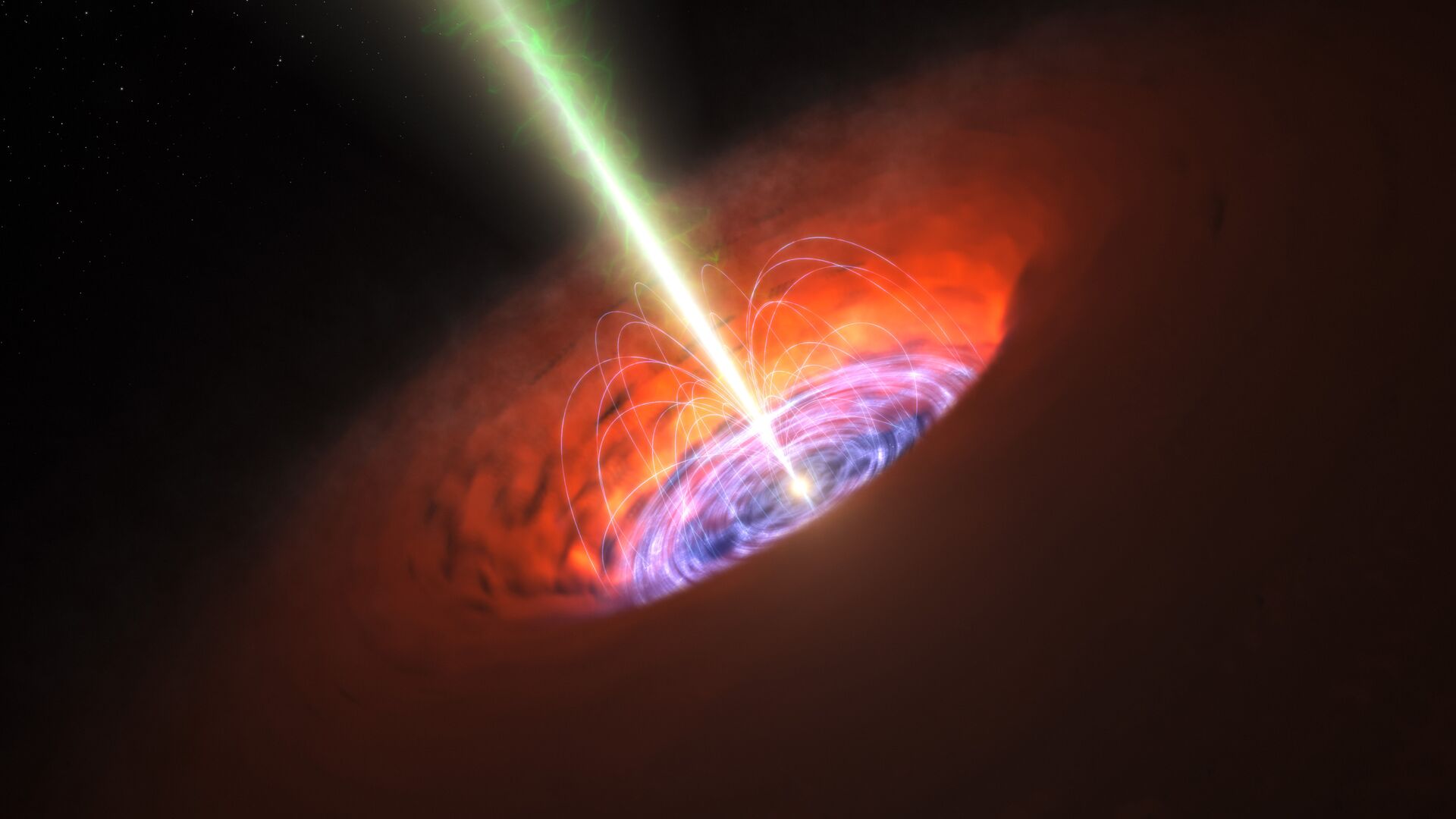https://sputnikglobe.com/20231205/scientists-detect-likely-culprit-of-strange-radiation-bursts-from-heart-of-our-galaxy-1115413007.html
Scientists Detect Likely Culprit of Strange Radiation Bursts From Heart of Our Galaxy
Scientists Detect Likely Culprit of Strange Radiation Bursts From Heart of Our Galaxy
Sputnik International
Having analyzed the data gathered by the Fermi Gamma-ray Space Telescope between June and December last year, the researchers have concluded that a flare of gamma radiation gets emitted every 76 minutes or so from that area.
2023-12-05T18:39+0000
2023-12-05T18:39+0000
2023-12-05T18:50+0000
beyond politics
science & tech
national autonomous university of mexico
supermassive black hole
gamma ray
https://cdn1.img.sputnikglobe.com/img/107390/35/1073903541_0:287:5000:3100_1920x0_80_0_0_07b6a7fdfdb41d8cc6b9df0e06c39eb6.jpg
Having analyzed data gathered by the Fermi Gamma-Ray Space Telescope between June and December last year, researchers have concluded that a flare of gamma radiation is emitted every 76 minutes or so from that area.These gamma rays supposedly originate from a blob of gas that is spinning around the black hole in question, Sagittarius A*, at very high speed (approximately one third of the speed of light).The researchers also noticed an apparent relation between these gamma ray bursts and the periodic emissions of X-rays from the same area, with the periodicity of the latter being about twice the periodicity of the former."The coincidence of the multiwavelength periodicity in X-ray and gamma-ray points towards a single physical mechanism that produces it," scientists Gustavo Magallanes-Guijon and Sergio Mendoza noted in a paper that was posted on the arXiv preprint server last month.
https://sputnikglobe.com/20231106/astronomers-discover-oldest-black-hole-yet--1114774514.html
Sputnik International
feedback@sputniknews.com
+74956456601
MIA „Rossiya Segodnya“
2023
Sputnik International
feedback@sputniknews.com
+74956456601
MIA „Rossiya Segodnya“
News
en_EN
Sputnik International
feedback@sputniknews.com
+74956456601
MIA „Rossiya Segodnya“
Sputnik International
feedback@sputniknews.com
+74956456601
MIA „Rossiya Segodnya“
supermassive black hole, black hole gamma ray burst
supermassive black hole, black hole gamma ray burst
Scientists Detect Likely Culprit of Strange Radiation Bursts From Heart of Our Galaxy
18:39 GMT 05.12.2023 (Updated: 18:50 GMT 05.12.2023) The likely nature of a strange repeating signal emanating from the vicinity of the supermassive black hole at the center of our galaxy has apparently been deduced by researchers from the National Autonomous University of Mexico.
Having analyzed data gathered by the Fermi Gamma-Ray Space Telescope between June and December last year, researchers have concluded that a flare of gamma radiation is emitted every 76 minutes or so from that area.
These gamma rays supposedly originate from a blob of gas that is spinning around the black hole in question, Sagittarius A*, at very high speed (approximately one third of the speed of light).
The researchers also noticed an apparent relation between these gamma ray bursts and the periodic emissions of X-rays from the same area, with the periodicity of the latter being about twice the periodicity of the former.

6 November 2023, 23:58 GMT
"The coincidence of the multiwavelength periodicity in X-ray and gamma-ray points towards a single physical mechanism that produces it," scientists Gustavo Magallanes-Guijon and Sergio Mendoza noted in a paper that was posted on the arXiv preprint server last month.





